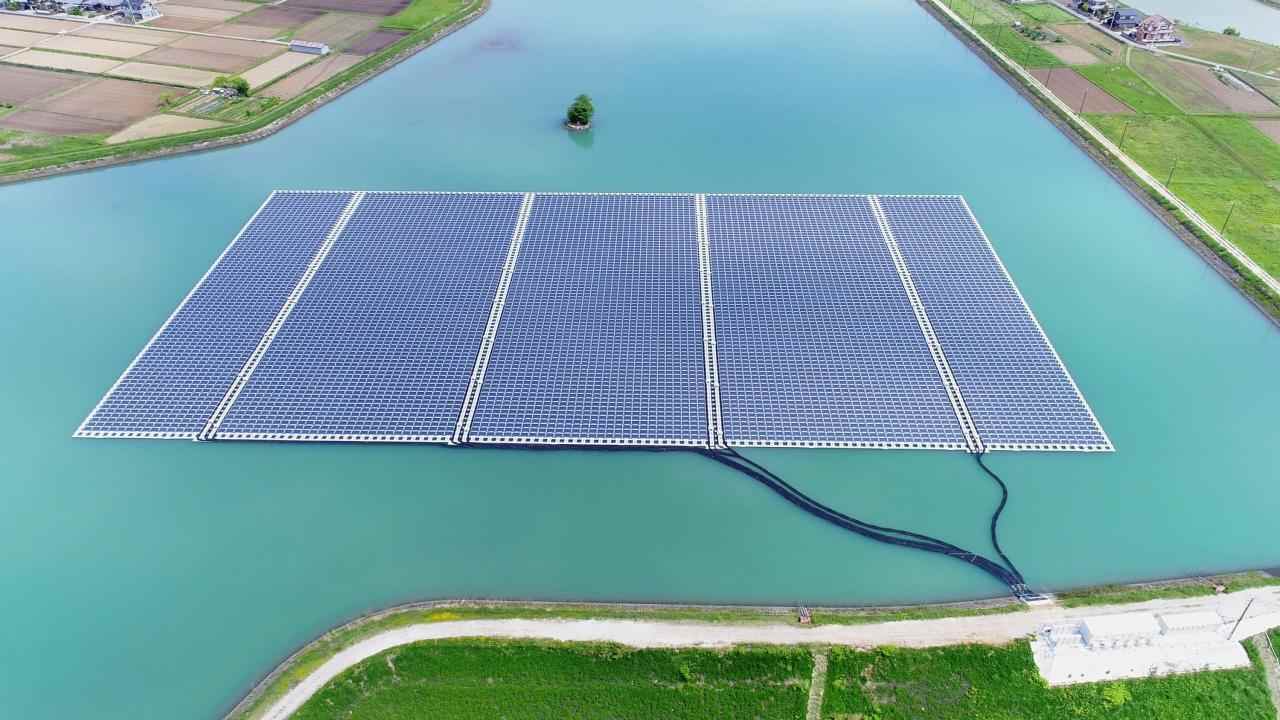Although Japan and China are moving forward, acceptance of the technology in the United States is still slow. Winemaker Greg Allen has a problem. As president of Far Niente winery in Napa Valley, California, he has calculated the amount of land his vineyard could use for solar panels o offset energy costs.
Allen said the number - about two acres - was "really hurt.". So he compromised: Far Niente completed a series of 2296 solar panels, 994 of which floated on a floating bridge connected to the bottom of the winery pond. The device is the first non experimental floating solar array in the world.
It was in 2008. Since then, floating photovoltaic power has proliferated in Asia - but not so much in the United States. Japan has more than 60 devices, which has the most devices in quantity in any countries in the world. China is a renewable energy giant, claiming to have the world's largest lineup. The facility, which went online in 2017, floats on top of an artificial lake at a collapsed coal mine near Huainan City. 166,000 panels can generate about 40 megawatts, or enough power to power about 15000 homes. A report by the world bank in 2018 estimated that the global potential of floating solar cell arrays on artificial water would exceed 400 gigawatts.
While adoption in the US has been slow, some recent deals may turn the tables. Typical installations include solar panels tethered to pontoons at the bottom of a reservoir or reserve pool - considered easier to use than lakes. Floating or underwater cables transmit the DC belt to the inverter on shore, where it is converted to AC and sent to the local power grid. Engineers have to consider a number of factors: the system must withstand strong winds and waves, the panels must be corrosion resistant, and the anchors must last 25 years or more.
But floating solar pv brackets also have the following advantages over land-based arrays: most obviously, they do not occupy valuable land that can be used for agriculture or development. The technology is easier to install than land-based or roof mounted systems. Once assembled, they are floated into place and fixed. Arrays can also improve the environment. Blocking sunlight through water can reduce evaporation and inhibit algal blooms. (It is not clear how the array affects fish, birds or other wildlife.) Because the efficiency of solar cells will be reduced when the temperature rises, the cooling effect of water can increase the conversion capacity by 20%.
Given these benefits, the slow pace of adoption in the US – only 14 installations at the end of 2018 – can be puzzling. Theresa Barnes, who runs the National Renewable Energy Laboratory (NREL) Photovoltaic Reliability team, said the availability of open land could be a factor. However, the lack of land is often the driver of a small number of American lands. This is the case in the Kelsey County Waterworks District of California, where 720 panel arrays were installed in its wastewater treatment tanks in 2018. Good returns are another incentive. The region expects it to recover installation costs within eight years of operation.

Robert Spencer, a data scientist and software developer at NREL, said the slowdown in U.S. economic growth may also be due to the uncertainties that the technology can provide. "We need to have some high-profile projects to really prove that this can happen on a large scale or by major players," he said. Spencer co authored a study in the December 2018 Journal of environmental science and technology that assessed the potential of the technology in 24,419 man-made water bodies in the mainland of the United States. It found that only 27% of the water in the floating solar cells can produce nearly 10% of the water in the country.
The United States is likely to succeed on a large scale. Cities and regions can be leaders. In July 2018, the Los Angeles City Council unanimously approved a proposal to build an 11.6 MW floating solar experimental plant at the Lake Van Norman reservoir, and the feasibility study is currently under review. Maribel Medina, the agency's senior professional engineer, said the Tampa Bay water authority has added a reservoir based solar feasibility project to its capital improvement plan for 2019, which is scheduled to be approved in June this year.
The business sector also showed more interest. Chris Bart, development manager of the floating solar business at Ciel & Terre, a solar development company, said his company completely changed its product portfolio from land and roof mounted solar to floating arrays about nine years ago. He said the company expects significant growth in floating photovoltaic power generation in the United States, especially in California, where the land is expensive. "This is an untapped niche market, and this is an undeveloped area of the earth's surface." he said.
